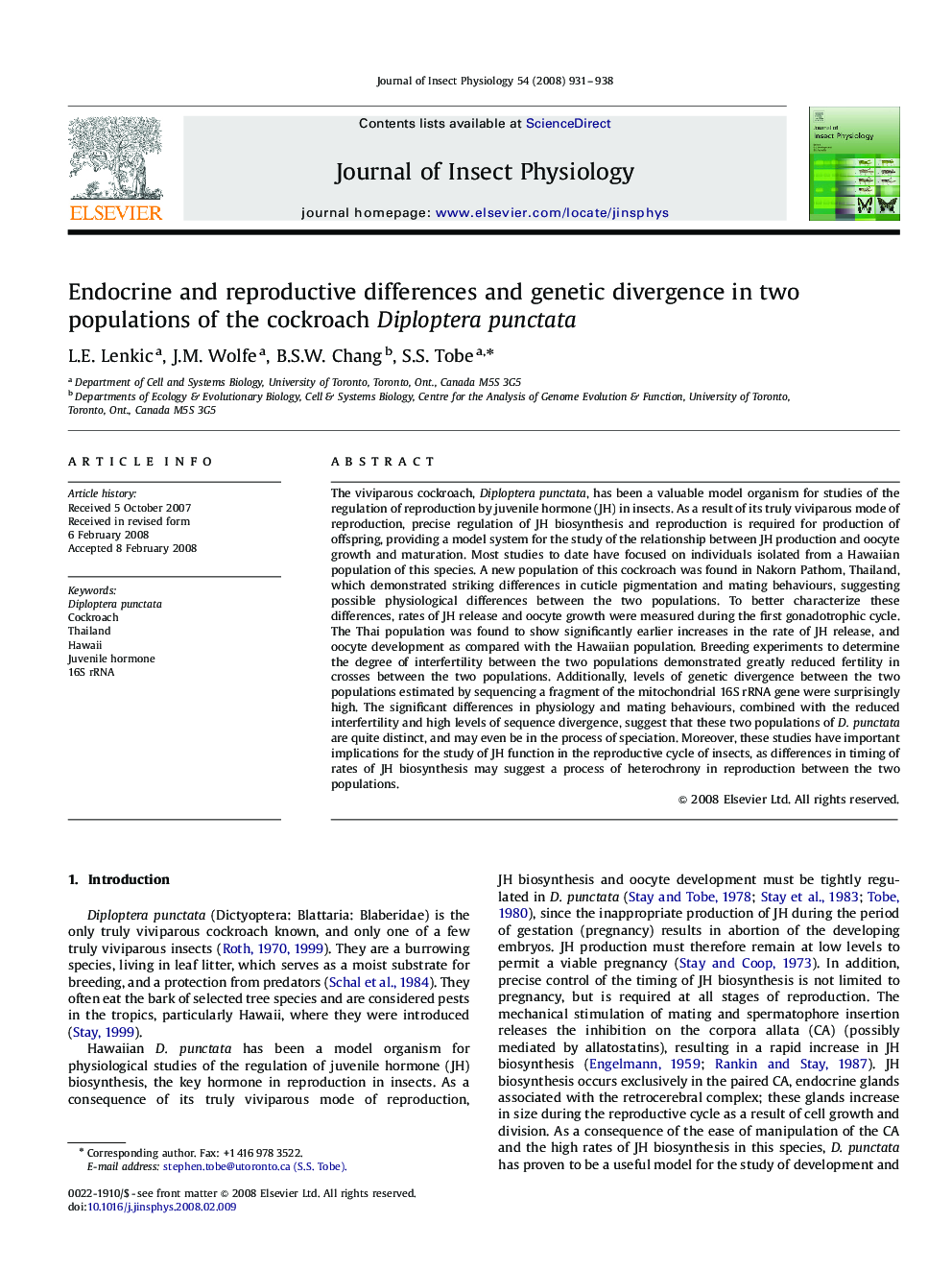| Article ID | Journal | Published Year | Pages | File Type |
|---|---|---|---|---|
| 2841283 | Journal of Insect Physiology | 2008 | 8 Pages |
The viviparous cockroach, Diploptera punctata, has been a valuable model organism for studies of the regulation of reproduction by juvenile hormone (JH) in insects. As a result of its truly viviparous mode of reproduction, precise regulation of JH biosynthesis and reproduction is required for production of offspring, providing a model system for the study of the relationship between JH production and oocyte growth and maturation. Most studies to date have focused on individuals isolated from a Hawaiian population of this species. A new population of this cockroach was found in Nakorn Pathom, Thailand, which demonstrated striking differences in cuticle pigmentation and mating behaviours, suggesting possible physiological differences between the two populations. To better characterize these differences, rates of JH release and oocyte growth were measured during the first gonadotrophic cycle. The Thai population was found to show significantly earlier increases in the rate of JH release, and oocyte development as compared with the Hawaiian population. Breeding experiments to determine the degree of interfertility between the two populations demonstrated greatly reduced fertility in crosses between the two populations. Additionally, levels of genetic divergence between the two populations estimated by sequencing a fragment of the mitochondrial 16S rRNA gene were surprisingly high. The significant differences in physiology and mating behaviours, combined with the reduced interfertility and high levels of sequence divergence, suggest that these two populations of D. punctata are quite distinct, and may even be in the process of speciation. Moreover, these studies have important implications for the study of JH function in the reproductive cycle of insects, as differences in timing of rates of JH biosynthesis may suggest a process of heterochrony in reproduction between the two populations.
